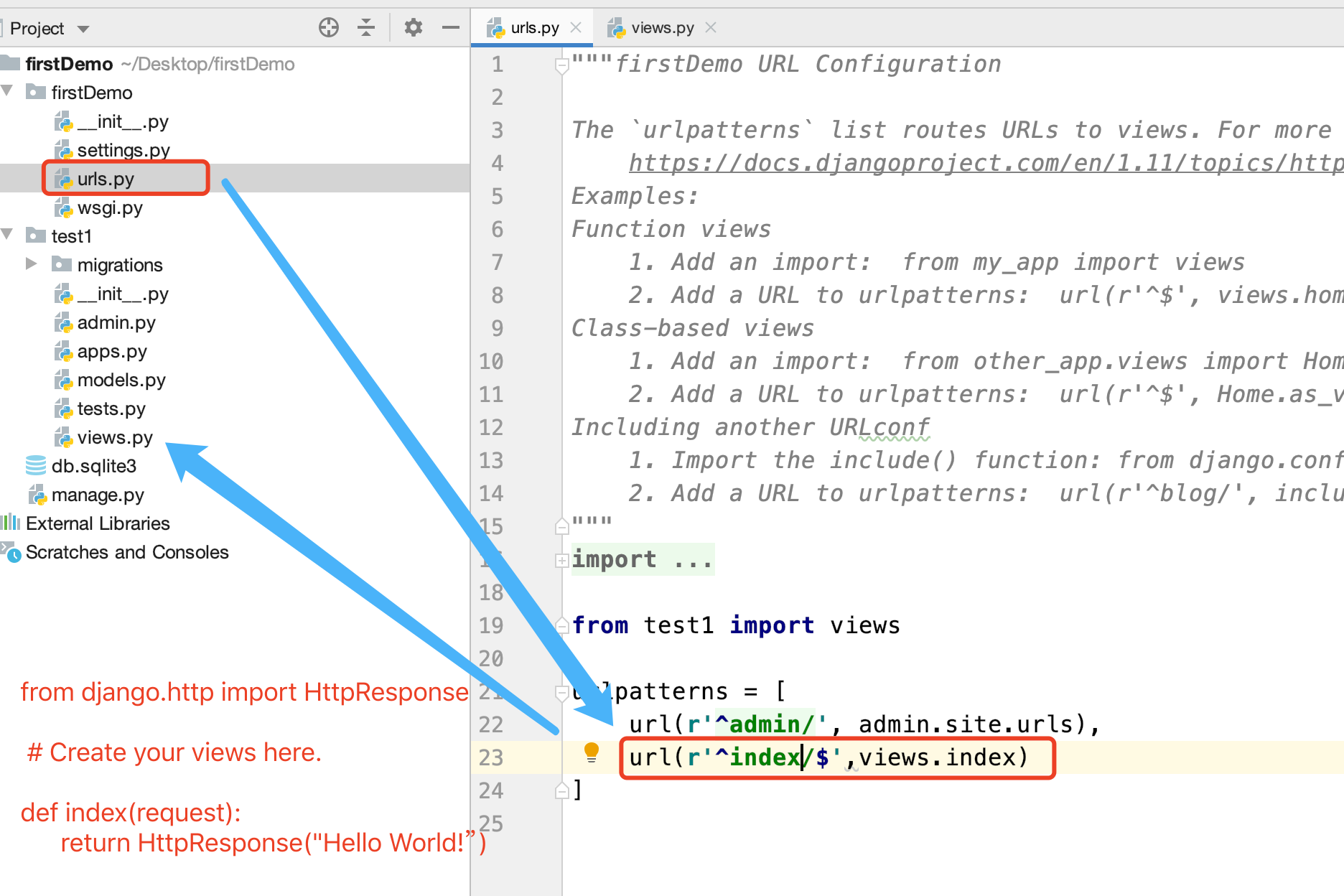Django入门
1、Django与python的版本支持情况

2、安装Django
pip install django==1.10.3 #或者 pip3 install django==1.10.3
#或者
python3 -m pip install django==1.10.3
#或者(推荐)从豆瓣源进行下载,国内用户下载快
pip install -i https://pypi.douban.com/simple/ django=1.10.3
3、开始第一个demo (django命令:https://docs.djangoproject.com/en/1.10/ref/django-admin/)
(1)在终端中输入django-admin,查看所有django的命令;

Available subcommands:
[django]
check
compilemessages
createcachetable
dbshell
diffsettings
dumpdata
flush
inspectdb
loaddata
makemessages
makemigrations
migrate
runserver
sendtestemail
shell
showmigrations
sqlflush
sqlmigrate
sqlsequencereset
squashmigrations
startapp
startproject
test
testserver
(2)创建项目
django-admin startproject firstDemo #创建项目,firstDemo为要创建的项目名称
目录结构如下:
__init__.py:一个空的文件,用它标识一个目录为 Python 的标准包。
settings.py:Django 项目的配置文件,包括 Django 模块应用配置,数据库配置,模板配置等。 urls.py:Django 项目的 URL 声明。 wsgi.py:为 WSGI 兼容的 Web 服务器服务项目的切入点。 manage.py:一个命令行工具,可以让你在使用 Django 项目时以不同的方式进行交互。
(3)创建应用

Available subcommands:
[auth]
changepassword
createsuperuser
[contenttypes]
remove_stale_contenttypes
[django]
check
compilemessages
createcachetable
dbshell
diffsettings
dumpdata
flush
inspectdb
loaddata
makemessages
makemigrations
migrate
sendtestemail
shell
showmigrations
sqlflush
sqlmigrate
sqlsequencereset
squashmigrations
startapp
startproject
test
testserver
[sessions]
clearsessions
[staticfiles]
collectstatic
findstatic
runserver
python3 manage.py startapp test1 #创建test1应用
目录结果如下:

migrations/:用于记录 models 中数据的变更。 admin.py:映射 models 中的数据到 Django 自带的 admin 后台。 apps.py:在新的 Django 版本中新增,用于应用程序的配置。 models.py:创建应用程序数据表模型(对应数据库的相关操作)。 tests.py:创建 Django 测试。 views.py:控制向前端显示哪些数据。
(4)运行应用
python3 manage.py runserver #访问域名即可,Django 默认会通过本机的 8000 端口来启动项目,如果你的当前环境该端口号被占用了,也可以在启动时指定 IP 地址和端口号。


(5) 显示hello world
1、修改firstDemo/settings.py中的这段代码
INSTALLED_APPS = [
'django.contrib.admin',
'django.contrib.auth',
'django.contrib.contenttypes',
'django.contrib.sessions',
'django.contrib.messages',
'django.contrib.staticfiles',
'test1' #添加test1应用名称
]

2、在firstDemo/urls.py中增加 url(r'^index/$',views.index)
3、在test1/views.py中增加
from django.http import HttpResponse
from django.shortcuts import render
# Create your views here.
def index(request):
return HttpResponse("Hello World!")

4、网页上访问:http://127.0.0.1:8000/index/

(6)使用模板
在应用 test1/目录下创建 templates/index.html 文件
<html> <head> <title>Django Page</title> </head> <body> <h1>Hello Django!</h1> </body> </html>
#修改test1下面的views.py
from django.http import HttpResponse from django.shortcuts import render # Create your views here. def index(request): # return HttpResponse("Hello World!") return render(request,"index.html")

4、django工作流

本文来自博客园,作者:Yi个人,转载请注明原文链接:https://www.cnblogs.com/feifei-cyj/p/11029307.html


